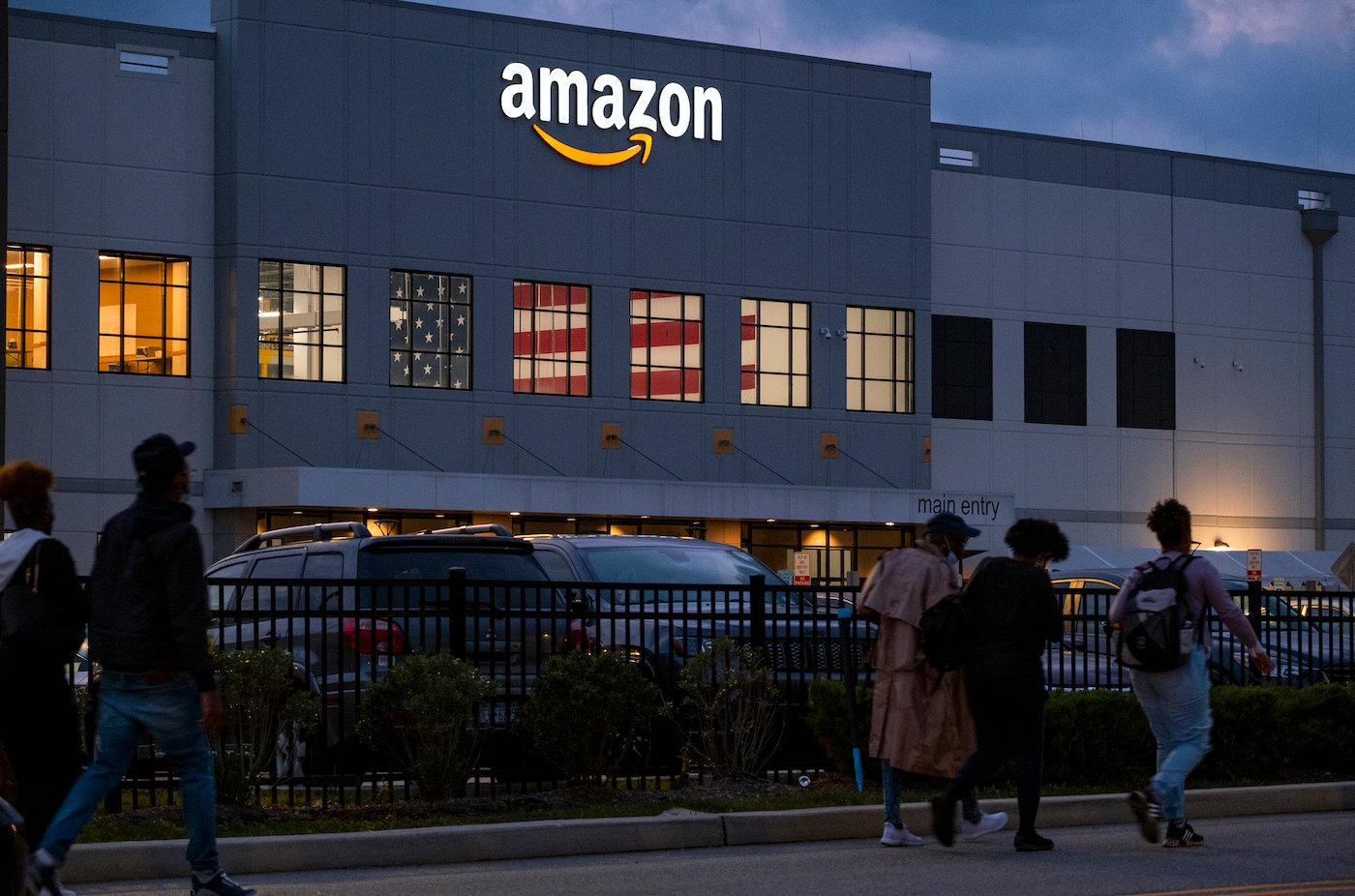NEW YORK (CN) — Amazon workers in New York City may be days away from creating the company’s first-ever union.
Employees at a Staten Island distribution center began voting Friday on whether to form the Amazon Labor Union, as supporters hope to create a domino effect that sparks a bigger movement across the e-commerce and cloud services giant.
The election is a culmination of two years of protests and organizing that followed alleged retaliation against employees who spoke out against working conditions that they said failed to keep them safe during the pandemic, including poor contact tracing and alerts and not having enough time to ensure proper hygiene.
Known as JFK8, the facility is the second in Amazon’s history to hold a union election, the first taking place last year in Bessemer, Alabama. Workers there voted against joining the Retail, Wholesale and Department Store Union. But organizers were granted a do-over after a regional director for the NLRB found that Amazon “hijacked” the process by installing a mailbox at the employee entrance, giving the impression that the company itself was controlling the election.
Unlike the Alabama mail-in election, Staten Island employees will show up in person to cast paper ballots until March 30, skipping Sunday. Vote-counting is expected to take two or three days.
Only full-time and regular part-time fulfillment center associates at JFK8 are eligible to vote. More than 8,000 employees are on the voter list, an Amazon attorney said, but observers for both organizers and Amazon will have an opportunity to challenge individuals’ eligibility — if someone no longer works at the facility or now has a job that doesn’t qualify them as a union member.
If organizers win, they will form bargaining committees and hash out specifics, but they are generally asking for better pay, benefits and representation.
“Looking for higher wages, and just generally being treated with respect,” said attorney Eric Milner, who represents the Amazon Labor Union. “I think they’re looking for a voice in how things run.”
In the early days of the pandemic, Amazon fired and disciplined employees who protested lacking Covid-19 safety protocols. New York Attorney General Letitia James accused the company of retaliation in an ongoing lawsuit in Manhattan state court.
James’ suit calls for Amazon to offer to rehire Christian Smalls, who was fired after leading a worker walkout and protest. Smalls is now president of the Amazon Labor Union.
Meanwhile, the termination of employee Gerald Bryson is the subject of a pending federal petition by the National Labor Relations Board seeking an injunction that would give Bryson his job back and require Amazon to publicly post and read out the decision to JFK8 employees.
The NLRB claims that Bryson’s firing chilled union efforts and asked a Brooklyn federal judge to reinstate Bryson before Friday’s vote kicked off, but the motion is yet to be decided.
A second vote is planned at Amazon’s second Staten Island location, known as LDJ5, on April 25, the union announced last week.
“It's kind of like dominoes falling,” Milner said of the individual facility votes. “If you can get workers to say, ‘Hey, it's actually possible,’ it can kind of catch on like a wildfire.”
Patricia Campos-Medina is the executive director of The Worker Institute at Cornell University’s School of Industrial and Labor Relations. She is hopeful about Amazon’s upcoming votes, but said the model for organizing “shop-by-shop,” established by the National Labor Relations Act, needs updating.
“Now companies have shops in 20 countries,” she noted.








